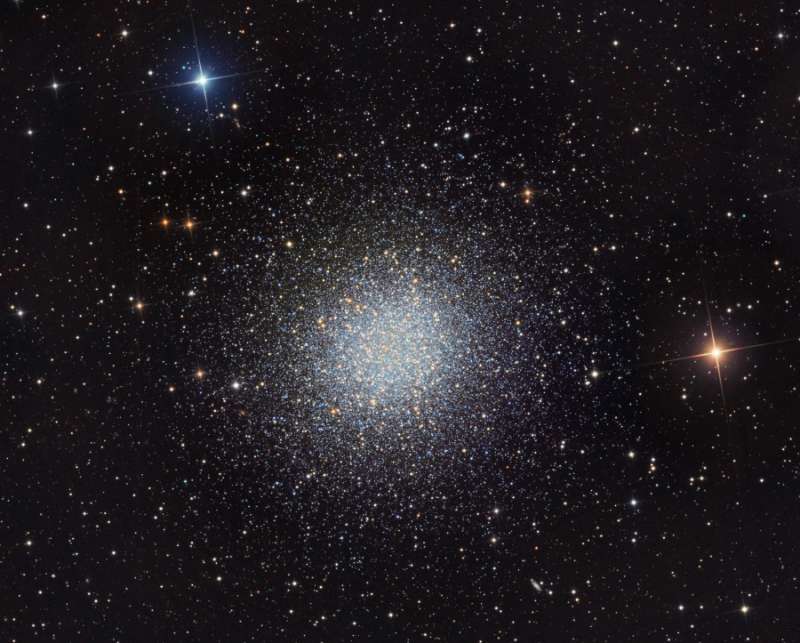Credit & Copyright: Martin Pugh
Explanation:
In
1716, English astronomer
Edmond Halley noted,
"This is but a little Patch, but it shews itself to the naked Eye, when
the Sky is serene and the Moon absent."
Of course, M13
is now modestly recognized as the Great Globular Cluster in Hercules,
one of the brightest
globular
star clusters in the northern sky.
Telescopic views reveal the
spectacular cluster's hundreds of thousands
of stars.
At a distance of 25,000 light-years, the cluster stars
crowd
into a region 150 light-years in diameter, but
approaching the cluster core
upwards of 100 stars could be contained
in a cube just 3 light-years on a side.
For comparison, the
closest star to the Sun is over
4 light-years away.
Along with the cluster's dense core, the outer reaches of M13
are highlighted in this
sharp color image.
The cluster's evolved red and blue
giant stars show up in yellowish and
blue tints.
1999 2000 2001 2002 2003 2004 2005 2006 2007 2008 2009 2010 2011 2012 2013 2014 2015 2016 2017 2018 2019 2020 2021 2022 2023 2024 2025 |
Январь Февраль Март Апрель Май Июнь Июль Август Сентябрь Октябрь Ноябрь Декабрь |
NASA Web Site Statements, Warnings, and Disclaimers
NASA Official: Jay Norris. Specific rights apply.
A service of: LHEA at NASA / GSFC
& Michigan Tech. U.
|
Публикации с ключевыми словами:
M 13 - globular cluster - Шаровое скопление
Публикации со словами: M 13 - globular cluster - Шаровое скопление | |
См. также:
Все публикации на ту же тему >> | |
